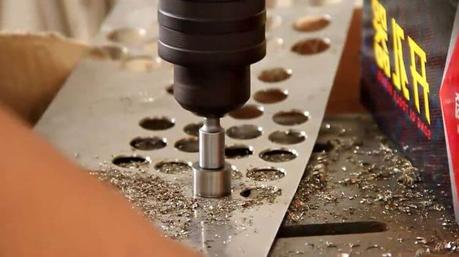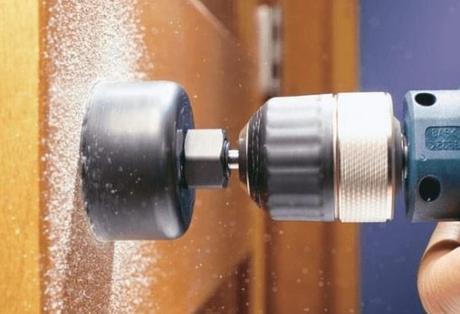
Whether you want to process wood, metal or plastic, this question always arises: what should you watch out for when using a hole saw? In this article, I will cover this handy tool, and I will dig deeper into six different tips every homeowner and craftsman should know. I will also take a closer look at the individual models and show how they can best be used in application areas.
As a carpenter, I have worked a lot with these tools in recent years to carry out a wide variety of projects. I want to share this knowledge with you.
6 Main Tips When Using a Hole Saw
1. Adjustable Hole Saw
The most-known hole saws are usually circular saw blades that are clamped into the drill chuck. This means that the respective material can then be sawed out. Nevertheless, how is that supposed to work with adjustable hole saws?
Various manufacturers have specialized in this. These include, for example, the models from professional drills. The respective hole saws can be continuously adjusted with an Allen key and they can range from 1 1/2 inches to 12-inches.
What should you pay attention to with such models? Unfortunately, many products are made very cheaply. This is not just a waste of money, but it can even be very dangerous. It mainly depends on which materials you want to process with it.
For example, if you want to cut out a 1/5-inches thin MDF board, cheaper models are also a good option. Due to the flexible heads, however, there is a risk of the drill being loosened with thicker and more rigid materials when the circle is cut out.
The blades are also not suitable for every material. An adjustable hole saw can be used to work on thin plasterboard. There are also tile drill bits that can be set in different stages. I cannot say much about that, though, as I have not tried it yet.
So pay attention to the quality of the respective product because adjustable hole saws are very practical and involve certain risks.
2. For Woodworking

Looking at the teeth, we can recognize hole saws that are made for woodworking. As with a normal wood saw, the teeth are arranged so that the woodchips are removed.
What should you consider when choosing a hole saw for wood? The most important points are the material thickness (or the cutting depth) and the material itself. Softwood, such as spruce can be easily drilled through. It is much more difficult with a beech or oak board.
When starting, the speed must be neither too high nor too slow. It is best to test this on a sample as well. If the speed is too slow, there is a risk that the wood fibers will fray. If, on the other hand, the speed is too high, there is a risk of the tool jamming and injuring yourself or destroying the workpiece.
The speed should be constant. When drilling, you should ensure that the drill collar is set at right angles to the wood surface. If this is not the case, there is a risk that the sheet will be tilted or that the drill hole will not be cut out cleanly.
Some hole saws can be used in the wood sector as well as for metals. Their teeth are usually much smaller. However, this often creates a burnt edge on wood. I would only use this type of saw for metal.
3. For Metalworking
You can make good use of the wood-metal hole saw just for metalworking. The number of revolutions of such saws varies depending on the model. However, with metal, you should make sure that the number of revolutions is significantly lower than with wood.
4. The Right Application
Whether you want to work on metal, wood or plastic panels: the most important step is that you start with a test piece. Position the center drill in the right place, start slowly and at low speeds. Hold the drill perpendicular to the workpiece. Be careful not to jam the lining. If necessary, use some cutting oil when working on metal.
5. Special Cases
There are special hole saws made to loosen spot welds between two sheet metal pieces: so-called spot weld cutters. These special hole saws drill out two pieces of sheet metal lying one below the other without damaging the lower sheet metal.
6. Quick Change System
While you can buy some inexpensive sets in the hardware store or on Amazon, certain manufacturers have specialized in quick-release systems or quick-change systems. The advantage is that the drill set is much more stable, and therefore harder types of wood can be processed.
It is particularly important to ensure that the drill bit is firmly anchored to the clamping system. In most cases, the drill bit will be tightened with an Allen key and Allen screw.
Conclusion
These tips will help every handyman, and DIY enthusiast cleanly cut holes out of any material (even concrete and brickwork!) I generally recommend Bosch for hole saws. In my experience, it can be used to drill the highest quality holes. Also, the price-performance ratio of the Bosch models is simply unbeatable. In general: read the product description carefully and follow the manufacturer’s instructions.
